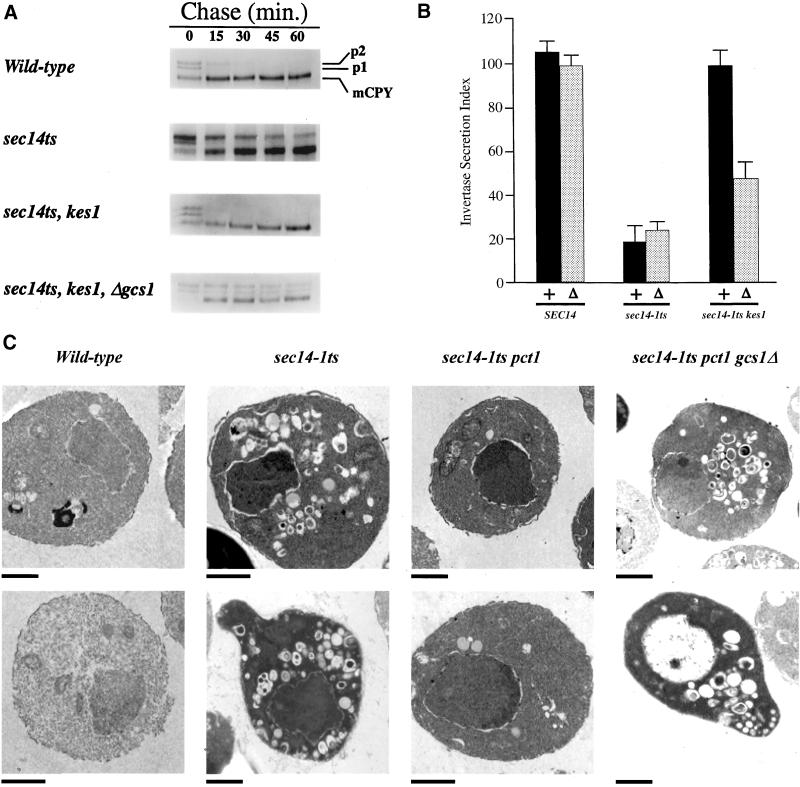Figure 3.
Secretory defects in Gcs1p-deficient bypass Sec14p mutants. (A) Trafficking of CPY to the yeast vacuole. Appropriate yeast strains were grown in minimal medium at 26°C, shifted to 37°C for 30 min, and radiolabeled with 35S-TransLabel for 10 min. Chase at 37°C was initiated by addition of a large excess of unlabeled methionine and cysteine to the cultures, aliquots were taken after the indicated times, chase was terminated by addition of ice-cold tricholoroacetic acid (final concentration 5%), and samples were put on ice. Labeled CPY species were recovered from cell-free lysates by immunoprecipitation, resolved by SDS-PAGE, and quantified. The endoplasmic reticulum/early Golgi precursor (p1), the late Golgi precursor (p2), and mature vacuolar forms of CPY (m) are identified at right. (B) Gcs1p insufficiency reimposes a secretion defect in bypass Sec14p strains at 37°C. Invertase secretion indices were determined (see MATERIALS AND METHODS). Relevant genotypes are given below, and (+) and (Δ) refer to GCS1 and Δgcs1 genotypes, respectively. Values represent averages of at least five independent trials with triplicate determinations for each strain. (C) Morphological characterization of Gcs1p-deficient bypass Sec14p mutants. Yeast strains were cultured to early logarithmic growth phase in YPD medium at 26°C and cultures were shifted to 37°C for an additional 2 h. Morphological profiles gathered by electron microscopy that are representative of the majority of cells observed from corresponding fields are arranged in columns. Relevant genotypes given at top, and the bar at the bottom left of each panel signifies a 1-μm standard for the corresponding panel. When cultured at 26°C, all strains show wild-type morphologies, and gcs1Δ has no significant effect on the morphologies of wild-type or sec14-1ts strains at 26 or 37°C (our unpublished data). Strains used included CTY182 (wild-type), CTY1-1A (sec14-1ts), CTY102 (sec14-1ts pct1-2), and CTY1352 (sec14-1ts pct1-2 gcs1Δ).

